On-Highway Winter Driving
When I was in Colorado the state was hit by a massive snowstorm that literally shut down the roads from the borders in! DIA couldn’t get any planes off the ground, and people couldn’t get out of their driveways to catch their flights! Even my dogs couldn’t get out of our driveway! The Colorado Association of 4WD clubs had to mobilize FEAT, the 4WD emergency assistance team, to help shuttle essential service personnel like police, nurses and doctors, city managers and help deliver food and medical supplies to those in need. Properly equipped and experienced off-roaders certainly helped keep the city moving!
It was the other type of off-roader that hindered and clogged the roadways. You know, the new sport utilities, purchased without training the drivers who had the false impression that 4WD is a panacea for go-anywhere ability. They “who sped down the dangerous, slippery roads” thought that the go-anywhere vehicles, indeed, could. Except they ended up in the ditches and guard rails of the highways and, not understanding why abandoned their now useless steeds and sought refuge in front of the fireplace at home until the tow truck delivered their rig safely to the garage.
Let’s talk about this phenomenon of using 4WD ON the highway! Since at least half the country sees some type of snow or ice on the pavement at least half the year, at some time, somewhere, there are people using 4WD on the highway.
In theory, and using computer models developed by engineers, the 4WD drivetrain is 4WD. All four tires get some amount of torsional relationship via the drivetrain. In reality, it is only two tires (when the transfer case is in 4WD mode) getting the full benefit of power application from the engine. I’m not here to start a debate about how much torque goes to which tire, but to shed some light about traction conditions when driving what a majority of people think is a 4-wheel drive!
When in 4WD mode on the snowy, icy highways, the vehicle can stop no better than before. The increased traction and forward control (to a degree anyway) is reduced by decreasing power due to road conditions. Driving like we have all the traction in the world only gets us in the ditch, upside down, in the guard rail, under a trailer rig, and usually in a lot of trouble!
Sitting up high should offer us a better reaction time than the average Honda Accord. Instead, it gives us a false sense of control, and we push that reaction time and the rules of spacing for X miles per hour and the “2-second rule” for distance and brake reaction time to the point that we end up running over the little Geo Metro that somehow we forgot was right in front of us. Because we have that commanding view of the road ahead and can see the goings-on way forward, it means we have a chance to prove we are attentive, aware, and capable drivers.
The boon of ABS brakes has helped save many people from disastrous consequences. Some of the “old school” drivers have a hard time relating to the new style of braking. If you have ABS brakes, read the owner’s manual about how to use them properly. Some vehicles have only rear-wheel ABS. Some have all-wheel ABS. Generally, if you have ABS and need to stop quickly, hit the brake pedal and hold your foot down (feeling the weird pulses is normal) until the vehicle is stopped or you gain control of the situation.
In the “old days,” we were taught to feather, pump, lightly drag the brakes when in a “panic” stop situation. This is still true if you do not have ABS. Practice “panic” stops if you have ABS. Get used to the way the brake pedal feels when “pulsing.” In the wintertime, go to a snowy and icy vacant parking lot and practice skid control. Learn to turn into the skid, how much pressure to use on the brakes, and how to use the ABS when controlling the skid. It takes practice to be able to handle on-highway avoidance techniques when they count. Watch out for parking buttons and sewer covers in the vacant lots!
If you will shift the transfer case into 4WD mode on the pavement, make sure you have some slippage. Yes, the tires must be able to “slip” sometimes. If you do not get slippage, you will get what is called “wind-up.” Wind-up is the condition where the front-end drivetrain pushes against the rear-end drivetrain right about in the middle of the transfer case. The gear train in the transfer case gets bound up and can cause the rig to come to a stop like someone was holding the vehicle back with a tow rope. The worst case is the transfer case could break, or you could twist a drive shaft. Usually, though, the rig will start to slow down for no apparent cause. The remedy is to shift into reverse and back up for a short distance (safely) and “un-wind” the gear case, then shift out of 4WD mode.
Some vehicles offer “full-time” 4WD. They will usually have a viscous coupling in the transfer case that allows some slipping of the drive train when on dry pavement. This system allows for one (1) tire to “look” for traction. You can feel the vehicle searching for traction at one of the tires. It is a kind of a surge effect that rotates from wheel to wheel.
With part-time 4WD, you will have to shift into a 4WD mode to advantage the front axle traction. Some vehicles will allow the “shift on the fly” to move at speeds up to 50 mph. Be careful doing this, as the sudden gain in traction and the sudden torsional force to the front axle could cause a slide or spin to lose control.
Tires are another mitigating factor in traction on icy pavement. Research has proven that specific tires like the “Blizzak” are better in snow and ice conditions than studded snow tires. I like using the BFGoodrich Radial All-Terrain tires in snow conditions. They have a lot of siping and offer excellent control.
Studs in tires are a good idea but must be used carefully. However, forward traction is usually good if, in a slide, the steel will allow for less resistance to stopping than bare rubber. Also, when starting, the tires with studs are more likely to spin, causing lost traction. Lots of siping is the key to the right snow tires. Tire chains are, of course, the ultimate traction device for snow and ice. They require time to put on and take off and can’t be driven over 30MPH.
Driving on snow and ice-covered roads is different than ‘wheeling on the trail. Heading up to the slopes for a weekend of skiing or over the bridges to grandmother’s house for turkey does take a certain amount of caution and driving finesse. When on the highway, pay attention to traffic patterns ahead, anticipate road conditions, have your rig adequately equipped for winter travel with the right snow tires, emergency supplies, and tire chains.
Off-road Winter Driving
When off-roading in the snow and ice, it is practical to use common sense. The deep snow can and does hide stumps, rocks, logs, and icy patches. The first snow usually is more comfortable to push through than the late season. The late snow has a hard layer between the soft snow and presents problems due to this hardened layer.
Sometimes it’s easier to drive through the deep snow with high flotation tires. It is best to make the snow trips past midnight when the snow can freeze up. You can go over such snow more efficiently. Just remember how deep it really is when you’re in the middle of a 15-foot drift that spans across a 200-meter ridge. It’s no fun digging a rig out of 15 feet of snow for 200 meters when you’re in your jeans and sneakers! Try to stay on top if that’s where you started. Chains are excellent for the snow that is up to 3-feet deep. Indeed, it depends on if it’s a fresh coat and how hard the bottom is.
Pay attention to the snow packing under the rig. It can freeze your engine solid, even when running. Snow bashing is hard on the rig. Slow speeds, snow-clogged radiator, and packed snow around the engine will ruin the toughest truck in a minute. Make sure the engine area is cleared out often and check the transfer case/transmission fluid temperatures together with the diff oil temp. Watch for chunks of ice and hard snow getting under the rig and damaging brake lines. In creek crossings, watch for ice flow and frozen brakes. Keep the engine running all the time when snow is off-roading.
The lead vehicle should swap off often with others in the convoy since the breaking trail is challenging on the rig and driver. Not to mention that the others behind get bored watching the leader smash forward, then back up, etc.
Get Traction with ATV Tire Chains
Driving offroad on snow and ice is different from driving trails during the warmer months. It’s not always easy to gauge how deep the snow is or what the terrain is like underneath the snow, which can hide large rocks, deep craters, and unstable terrain near the edge of a drop-off. It’s also tough to get enough traction on snow and ice.
I sometimes drive ahead slowly and set a way, then back up. Drive forward some more, then back. Like two steps forward, one back. If you have chains, you may just want to let them churn slowly with slow, steady progress on.
If you’re to run chains, keep the tires inflated to normal highway pressure. NEVER air down with chains.
When running chains and you come across rocks, ledges, etc., BE CAREFUL, the chains can slip easily on the rocks, especially on downhill descents. You will have very little control over the solid rock with chains. With chains on, you’ll also increase the damage potential when not paying attention to roots, stumps, etc. The chains can catch on anything if they are loose and lead to a broken hub or axle.
I keep the lockers off on off-camber trails, drive very slowly, and let the tires get traction.
You may slip off to the side, and the hard snow will prevent you from getting back in. I usually back up and then get out and stomp a channel so that my tires stay on the trail instead of following the ruts I dug with the tires in the deep snow.
Be super aware of the center of steering. The wheels can get full turn quickly, and they will leave you with little control. Keep slow and steady, with the wheels getting traction aimed straight ahead.
For both on – and off-road winter driving, having your rig properly tuned and winterized is essential:
- Inspect the antifreeze – flush and refill to manufacturer’s specs.
- Check the hoses – replace if squishy.
- Observe the belts – replace if cracked or glazed over.
- Tune the engine – check the wires, distributor cap, coil output.
- Change to winter-weight oil according to manufacturer’s specs.
- Check or change gear oils and other drivetrain reservoirs. The moisture built up over the past summer from the mudbugs and water crossings can freeze in the differentials.
- Check the tire pressures – is the spare tire ready?
- How about the wheel bearings, brakes, power steering, air filter, fuel filter, heater controls, door hinges and locks, wiper blades, and washer fluid?
- Check the exhaust system for holes and leaks – cold weather means closed windows and a leaky exhaust system can put you into a deep sleep!
Do I Really Need Snow Tires on my Vehicle?
One way to keep your vehicle from getting stuck is to install snow tires. For added traction, toss a set of chains for tires in with your offroad gear. Even the best snow tires won’t give you enough traction in some situations.
Benefits of a Winch in Winter
The more you wheel offroad in the winter, the more likely it is that you’ll need to use a winch to get you out, sooner or later. Owning a recovery winch in the winter is especially important for survival. Hypothermia can easily set in while waiting for another vehicle to rescue you or while trekking back to the trailhead to find help. Having the resources to recover your own vehicle—and your friends’ vehicles—could be a matter of survival.


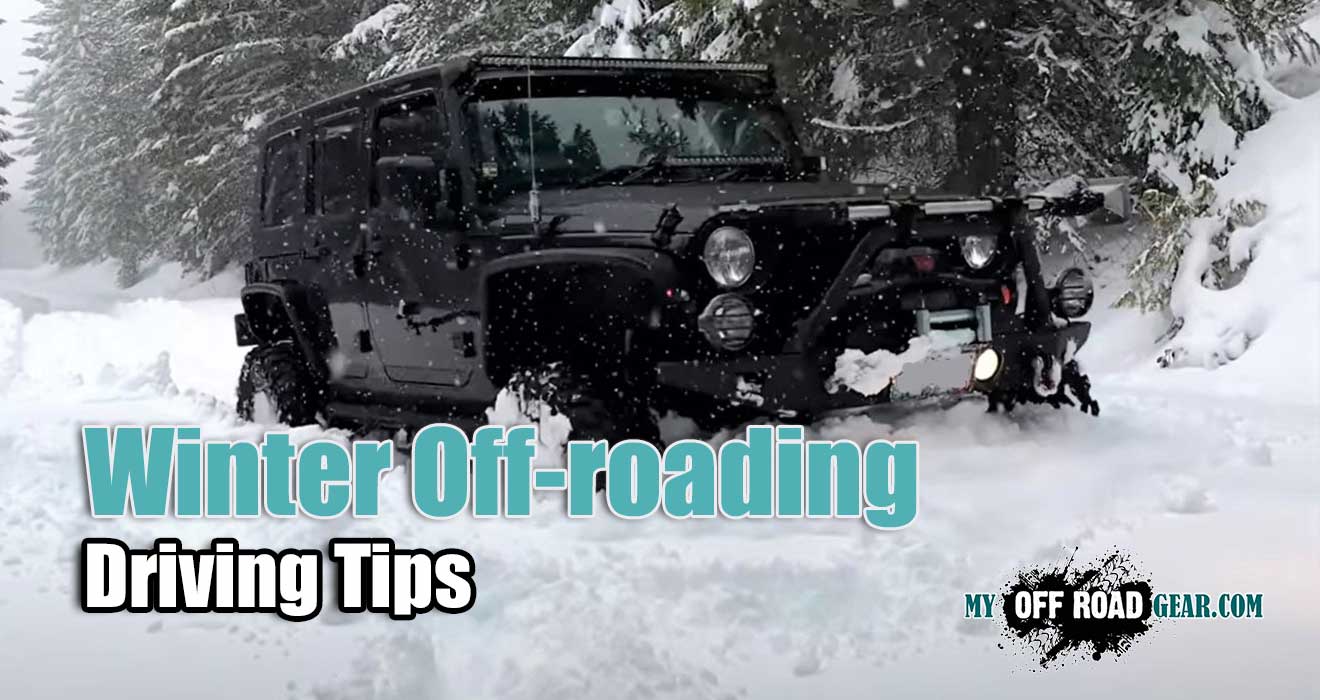
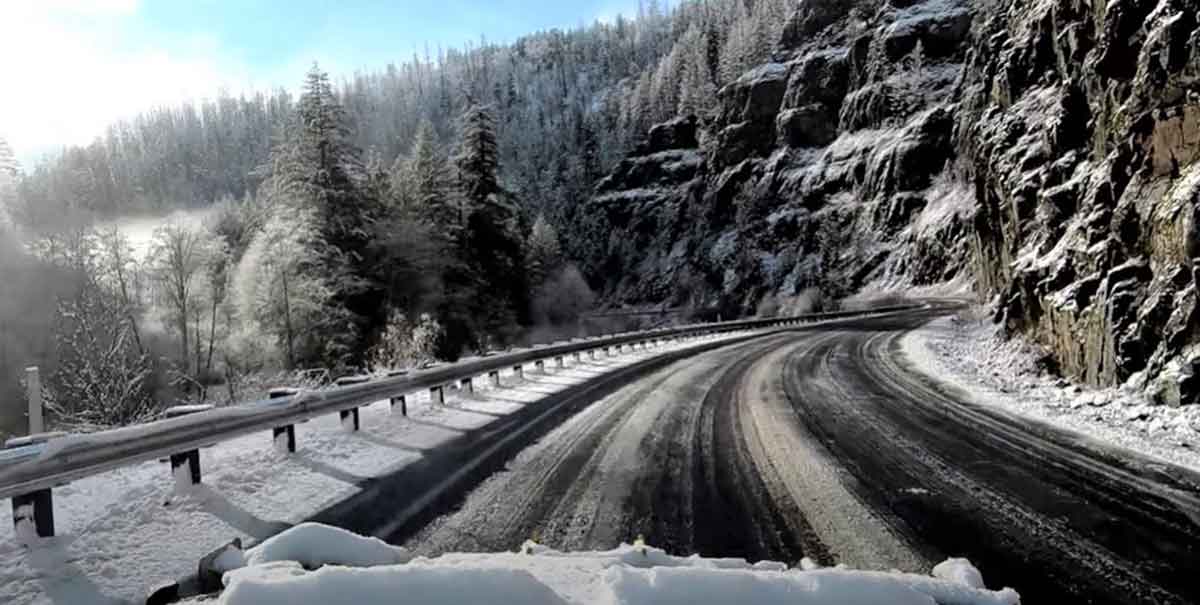
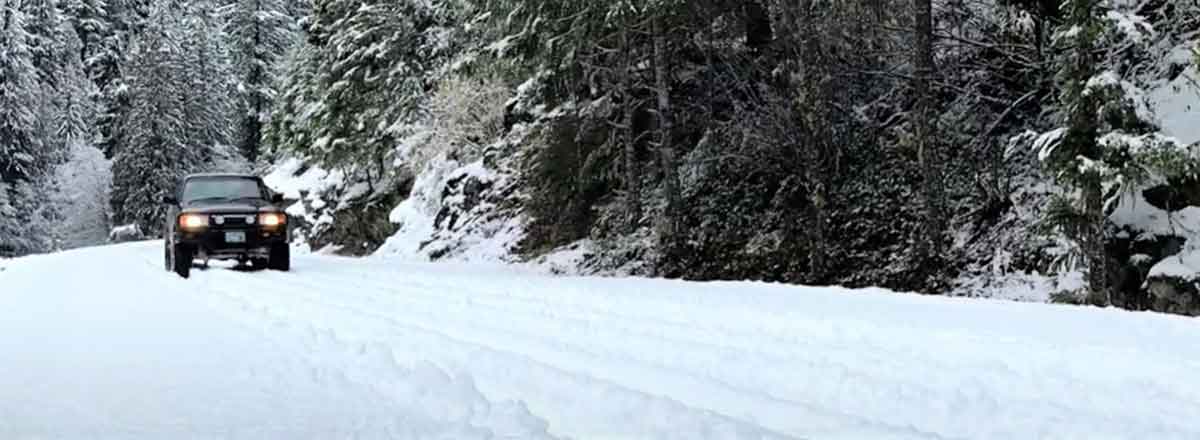
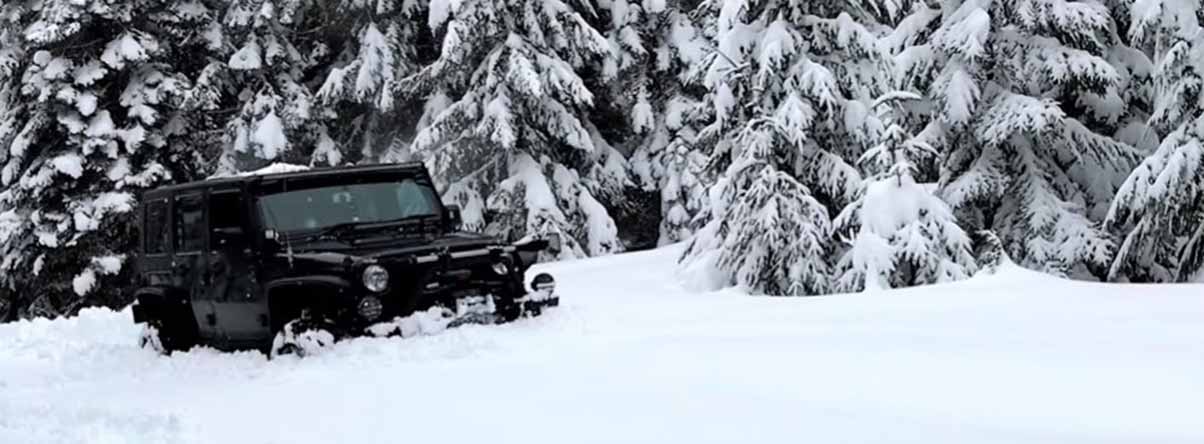

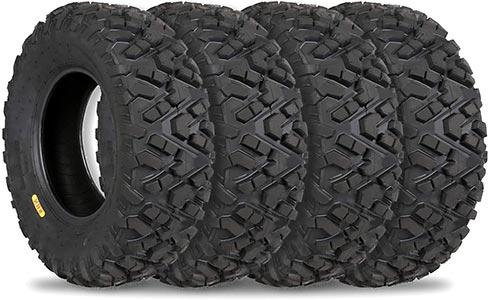
Add Comment